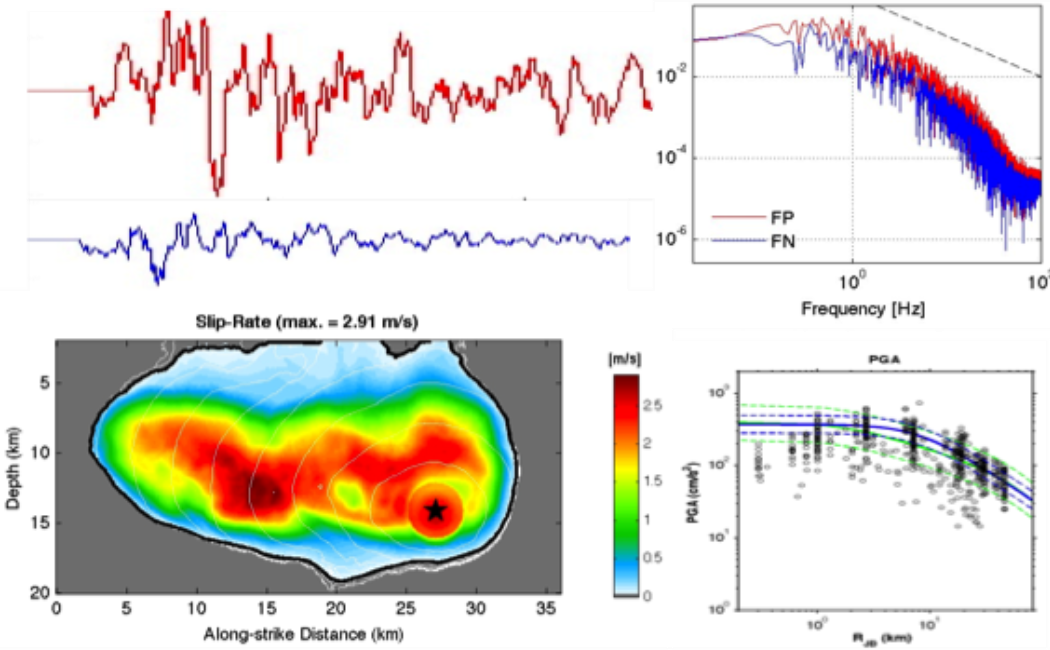


Broadband ground-motion simulations can be conducted in two ways, using either hybrid methods or applying a direct approach. Hybrid methods are conceptually and computationally simpler, but of course rely on strong assumptions and thus have general limitations.
Direct methods for broadband seismic wavefield simulations are computationally demanding (requiring HPC facilities), but capture the known physics of earthquake rupture and seismic wave propagation in 3D heterogeneous Earth. In our hybrid approach, we compute deterministic low-frequency time series (frequency < 1 Hz), and combine them with stochastic high-frequency (frequency > 1 Hz) seismograms.
When directly computing the complete broadband seismic wavefield, we consider realistic earthquake ruptures embedded in a 3D heterogeneous Earth model, and thus we fully account for seismic scattering effects. Broadband ground-motion simulation is indispensable for earthquake-engineering applications that model the nonlinear structural behavior of buildings due to seismic shaking.